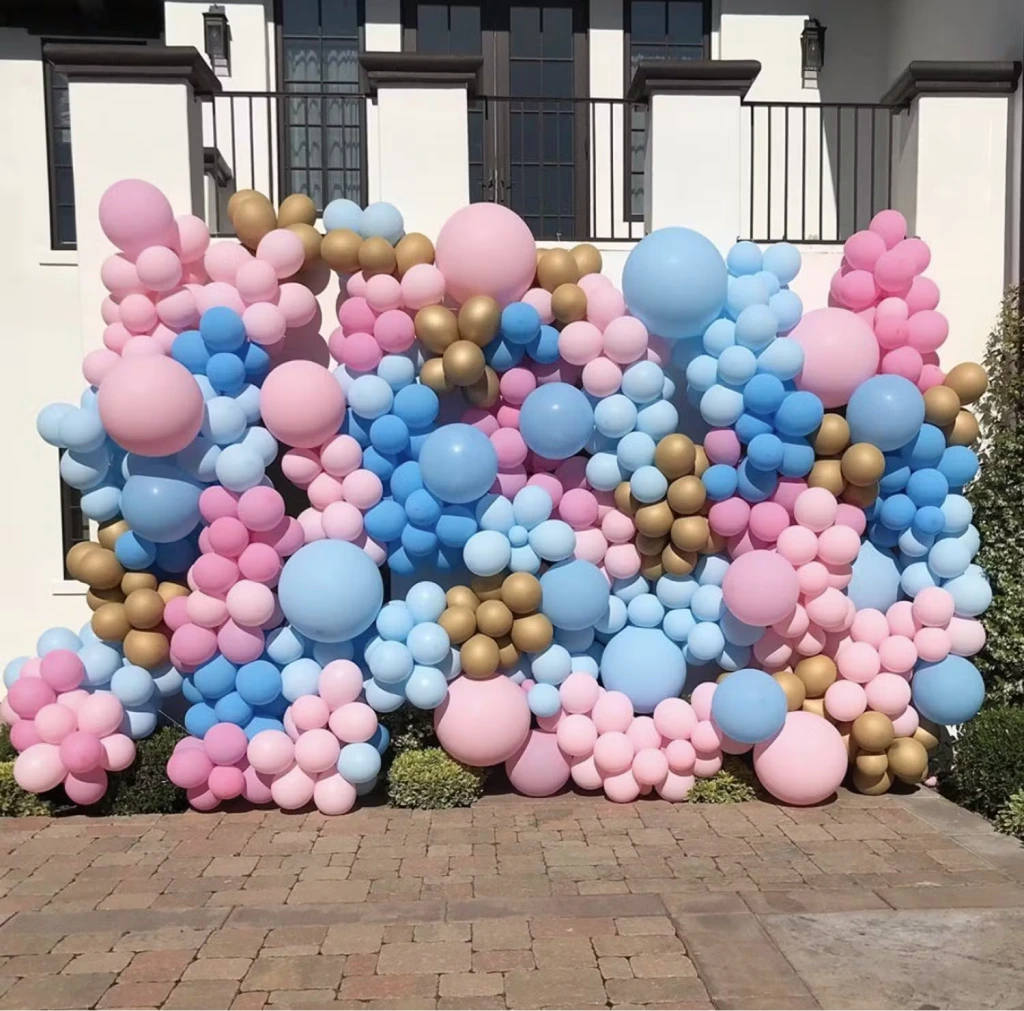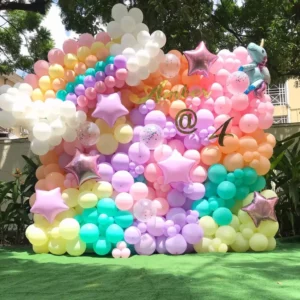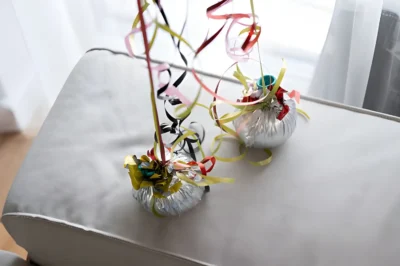Balloons are fun for any party, but hot weather can be tricky. When it gets really warm, helium balloons in heat sometimes pop or lose their shape faster than usual.
What Happens to Balloons in Heat?
When it’s hot, the air or helium balloons in heat expand. This puts pressure on the balloon, and it can pop if it gets too full. Even if it doesn’t burst, the heat can make the balloon softer and way easier to tear. Dark colors heat up faster in the sun, so they’re more likely to pop. Balloons can also lose their shine or get sticky when it’s really warm. Keeping them in the shade or indoors helps them last longer.
Types of Balloons: How They React to Heat
- Latex Balloons. These are the most common and stretch easily, but these balloons pop in heat. Heat makes the latex expand and weaken, especially outdoors.
- Foil (Mylar) Balloons. They handle heat a little better since the material doesn’t stretch much. Still, too much sun can make the air inside expand and cause them to burst or slowly leak.
- Plastic Balloons. These are tougher and more resistant to heat but can still become softer and lose shape if left in direct sunlight for too long.
Can Balloons Survive Extreme Heat?
It depends on what you call extreme temperature. Most balloons in heat can handle normal warm weather, around 70-85F (21-29C), without much trouble. Once it gets hotter than 90F (32C), latex balloons start to soften and expand too much, making them more likely to pop.
Foil balloons can handle slightly higher temperatures, up to about 100F (38C), but beyond that, they often lose shape or burst. In direct sunlight, the surface of a balloon can reach over 120F (49C), which is usually enough to make almost any type of balloon pop.
Tips to Prevent Balloons from Popping in Heat
- Keep them in the shade. Direct sunlight quickly overheats balloons, so set them up under a tent, tree, or canopy.
- Inflate them a bit less. Leave some room for the air or helium to expand when it gets warmer.
- Choose lighter colors. Light shades reflect sunlight better and stay cooler than dark ones.
- Use higher-quality balloons. Thicker latex or foil balloons can handle heat a little longer.
- Avoid hot surfaces. Don’t place balloons in the heat near metal, concrete, or car roofs, they can become too hot under direct sunlight.
- Set up right before the event. Inflate balloons as close to start time as possible to keep them fresh.
Latex vs. Foil Balloons: Which One Is Better in Hot Weather?
Latex balloons are made from natural rubber, which expands easily when temperatures rise. Once the air inside reaches around 90F (32C) or more, they can stretch too much and pop. In direct sunlight, they often last less than an hour before losing shape or bursting.
Foil balloons are made from a thin metal-coated plastic that doesn’t stretch much. They can handle slightly higher temperatures – up to around 100F (38C) without popping.

The Best Temperature for Balloons
The best temperature for helium balloons is between 65F and 80F (18C to 27C). In this range, both latex and foil balloons stay firm without expanding too much. Cooler air helps keep the material strong and the shape consistent, so balloons look fresh for longer.
When it gets hotter than 85F (29C), the air or helium inside begins to expand, which can stretch or damage the balloon. Very cold temperatures aren’t ideal too – they make latex brittle and shrink the balloon.
Conclusion: How to Keep Your Balloons Safe in the Heat
Keeping balloons safe in the heat mostly comes down to when you inflate and keep them. Avoid overinflating, choose light colors, and always keep them shaded when possible. Are you setting up a balloon arch, balloon garland, balloon columns, or a balloon backdrop? The right care helps your decorations stay beautiful throughout the event.
If you celebrate outdoors, it can also help to work with a local balloon company in Chicago that knows how to handle warm weather and make sure your balloons last, even on the hottest days.
Balloons in Heat - FAQ
How Does Temperature Cause Balloons to Pop?
Temperature causes balloons to pop by expanding the air or gas inside them. As the temperature rises, the gas expands, increasing the internal pressure. If the balloon can’t handle the pressure, it will burst. Latex balloons are more prone to popping because they stretch more easily, while foil balloons are more resistant.
What Kind of Balloons are Most Likely to Pop in the Heat?
Latex balloons are more likely to pop in the heat compared to foil (Mylar) balloons. Latex is more sensitive to temperature changes because it stretches and expands more easily. Foil balloons are more resistant to changes in temperature but can still pop under extreme conditions.
How Hot Does it Need to Be for a Balloon to Pop?
Balloon popping due to heat is more likely to occur when the temperature reaches around 90°F (32°C) or higher. However, it depends on factors like the type of balloon, how much it is inflated, and the specific conditions it’s exposed to, like direct sunlight or high humidity.
Can a Balloon Pop if Left in a Hot Car?
Yes, a balloon can pop if left in a hot car. Cars can reach extremely high temperatures, sometimes well above 100°F (38°C), which could cause the balloon to expand and burst. It’s always best to avoid leaving balloons in a hot vehicle, especially on sunny days.
How Can I Prevent My Balloons From Popping in the Heat?
- Avoid placing balloons in direct sunlight or near heat sources (such as radiators or hot car interiors).
- Use a balloon regulator to avoid overinflation, allowing for slight expansion when exposed to heat.
- If you’re using latex balloons, consider using foil balloons, as they are less sensitive to temperature changes.
- Keep balloons in cool, shaded areas and away from excessive humidity or extreme temperature fluctuations.








